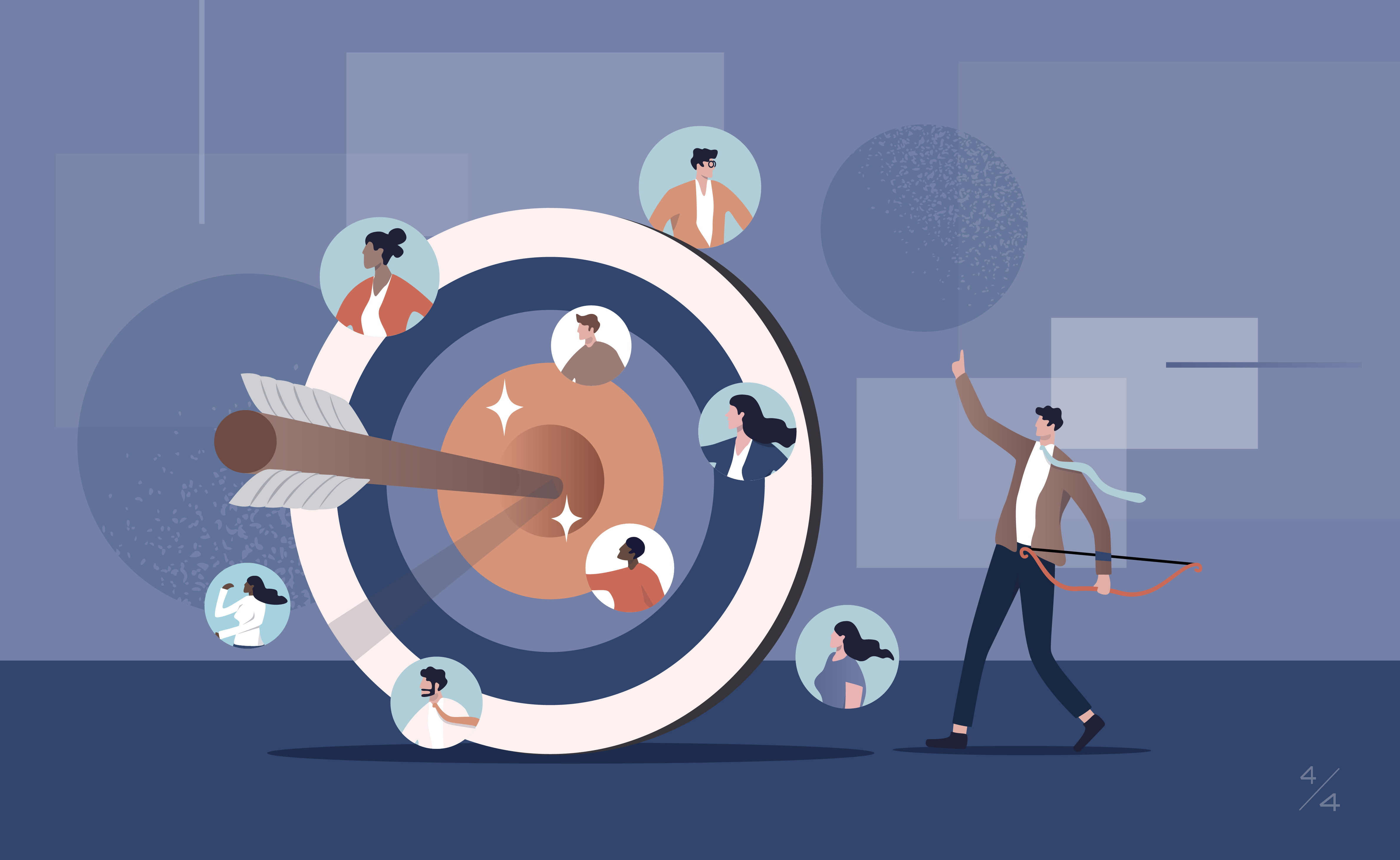People are distracted more than ever, and businesses need to keep up to get their attention. It is crucial to win “mindshare”, at a time when wars, pandemics, politics, and climate change can instantly shift focus. Buyers resemble computers with a limited amount of RAM, and you want your brand to remain in their memory at all costs.
EverWonder participated in a Hubspot event called Inbound, where we watched a webinar given by Allyson Hugley of Linkedin. She used findings from a recent LinkedIn B2B study to make her case. We were inspired to share our take on the lecture.
Hugley presented three big topics about how we can connect with future buyers, and how the strategies needed to win mindshare are changing:
- Changing content expectations
- New models for creating mental availability
- Gen Z buyers
Changing Content Expectations
Just like with fashion, art, or literature, norms and expectations around online content continue to change. What was new and exciting yesterday is now old and basic. There are two important ways in which content expectations are currently changing:
- More content is of lower quality
- Future buyers want to see more provocative content.
Obviously, these are related. The more the market becomes saturated with low-quality content, the more people will want to see radical ideas.
Future Buyers See More Content With Lower Quality
Awareness is scarce. Time-pressed customers simply don’t tolerate poor, unoriginal content. This means that now more than ever, it is crucial to prioritize quality over quantity.
The LinkedIn B2B study examined attitudes toward saturation in the content marketplace.
.jpg?width=648&height=171&name=muse__ConnectingW_Inline1%20(1).jpg) 66% of B2B decision-makers said the pandemic spawned a huge increase in the amount of thought leadership in the marketplace. Although this is a subjective perception, it most likely reflects an underlying reality.
66% of B2B decision-makers said the pandemic spawned a huge increase in the amount of thought leadership in the marketplace. Although this is a subjective perception, it most likely reflects an underlying reality.
.jpg?width=648&height=171&name=muse__ConnectingW_Inline2%20(1).jpg) 55% said that if a piece of thought leadership does not pique their interest within the first minute, then they will move on. Given that less than half of the pieces they see do, this means that most thought leadership written is almost never even read.
55% said that if a piece of thought leadership does not pique their interest within the first minute, then they will move on. Given that less than half of the pieces they see do, this means that most thought leadership written is almost never even read.
People Like Provocative Content. Future Buyers Are No Different.
Surprising, controversial, or even inflammatory content gets more eyeballs than boring, bland, and uninspiring content. Although this no doubt creates many problems in the world, it is a fact of life.
Rather than try to deny our preference for provocative content, we should try to take advantage of it to explore new horizons. Instead of validating existing thinking, try to push customers towards new ideas and new conclusions.
In the LinkedIn study, 81% of B2B Decision Makers preferred thought leadership that offers provocative ideas that challenge their assumptions regarding a topic, over content that validates current thinking.
71% consumed thought leadership to stimulate their thinking and generate new ideas for their organization.
68% consumed thought leadership to gain insight into future trends poised to impact their business organization.
New Models For Creating Mental Availability
Brands compete to achieve and retain top-of-mind status with customers. But people have limits on their mental capacity and are already preoccupied with their work and their life. They don’t have enough RAM to keep track of every possible brand to purchase from. So how can brands stay relevant?
.jpg?width=648&height=398&name=muse__ConnectingW_Inline3%20(1).jpg) Committees Make Decisions More Than Individuals
Committees Make Decisions More Than Individuals
The average B2B buying committee contains 6.8 people. That’s 6.8 people that have to remember and think of your brand.
Most Future Buyers Are Out-Market
An estimated 95% of future buyers are out of market. This means that they aren’t even in your sales funnel at all.
.jpg?width=648&height=398&name=muse__ConnectingW_Inline4%20(1).jpg) You Need To Reach Buyers Who Are Not Ready To Buy
You Need To Reach Buyers Who Are Not Ready To Buy
Companies may buy on regular, but long, schedules. For example, computer upgrades may take place every 3-5 years, or automotive upgrades every 10. These customers still need to be nurtured.
Staying Top Of Mind With Category Entry Points
Category Entry Points, or CEP, are cues that trigger memories in buyers when they need to buy. Consider an employee at lunchtime – the clock cues her to feel hungry, and a sign outside cues her to remember the new Chipotle around the corner. These are all CEP.
To connect with future buyers, create brand resonance by stimulating CEP. There is no limit to the list of possibilities here. Consider factors such as:
- Emotion
- Image
- Seasonality
- Related activities
- People involved
The more CEP tied to your brand, the greater the likelihood of a purchase. It’s like having a little program stored on your potential customer’s hard drive – even with limited RAM, your name will pop up when the time is right.
Gen Z Buyers
By 2025, Gen Z employees will make up 27% of the workforce. Their attitudes, habits, and norms will impact buying decisions. Common aspects of their life experiences come into play:
- Gen Z is leading the “great reshuffle”. They move around a lot, both physically and between jobs. Their job transitions are up 80%.
- Gen Z tends to be career motivated. 77% of Gen Zers “believe they will need to work harder compared to those in past generations to have a satisfying and fulfilling professional career.”
- Gen Z craves stability. Their lives have seen multiple global catastrophes. They have also not seen a time before the internet, and expect its services to remain in place.
- Gen Z is analytical and well-researched. 65% said they value knowing what is going on around them, and 86% are engaged in online learning. No doubt their digital upbringing has forced them to focus on the sources.
In any case, your future buyers will become increasingly dominated by Gen Z and Millennial individuals and committees. Expect them to think critically about your product before buying.
Conclusion: Three Key Takeaways
We would encourage you to walk away with these three salient themes.
First, the bar for content is moving higher. In order to get buyers’ attention, you need original, thought-provoking content, not recycled noise.
Second, Category Entry Points help you stay top of mind with future buyers. Most of your buyers are not in-market right now, but they will be. To be the first name that they remember, you must create triggers in their mind for the situations they will go into. It takes 7-12 brand impressions to begin to create “brand recall”.
Third, the new generation of buyers is more career-focused, mobile, and tech-savvy than the generation currently leaving the labor pool. They will make precise decisions based on high-quality information. Expect hard questions from Gen Z.
Related posts
Food for thought.

Connecting With Future Buyers: Shifting Buyer Demographics (4/4)
by Patrick Gallant

Connecting With Future Buyers: Why Marketers Demand A Higher Standard Of B2B Content (2/4)
by Patrick Gallant
.jpg)